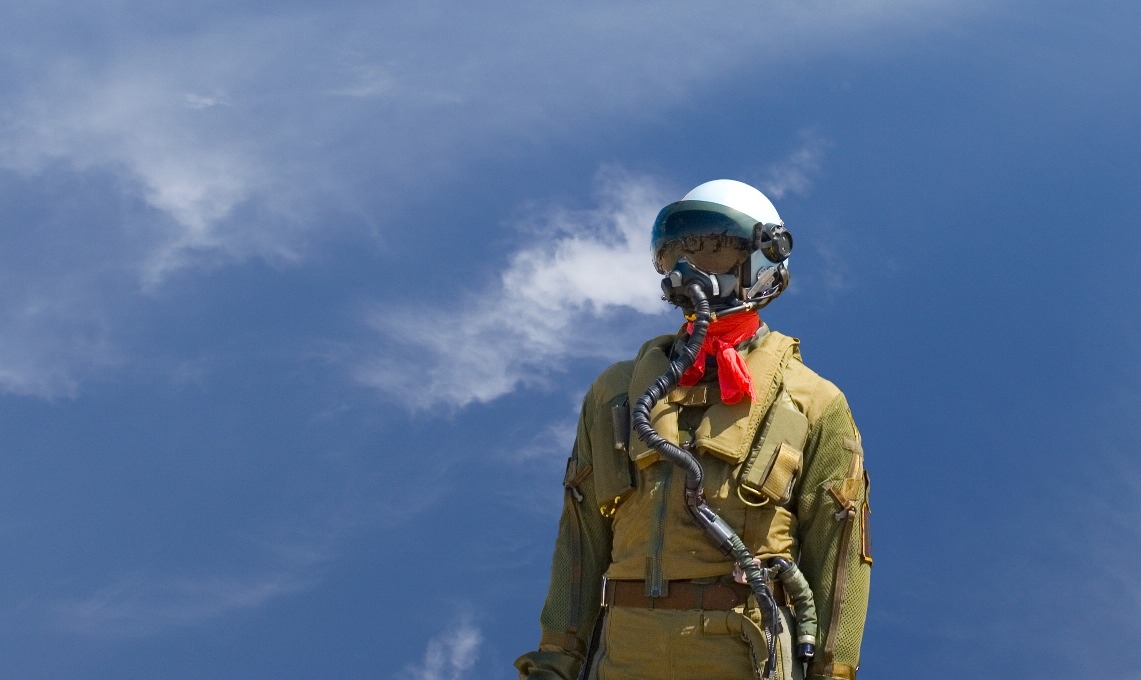


(UNDISCLOSED LOCATION) – Radar cannot detect it, and neither can the human eye. The U.S. Air Force’s top-secret stealth bomber, the C-THRU 117, a state-of-the-art aircraft so incredibly stealthy it is literally invisible, is now allegedly lost somewhere on the tarmac of Kandahar Airfield in Afghanistan.
Military officials are baffled over the loss, reporting that the bomber returned safely from its sortie early Thursday morning, and has not been seen since.
“The pilot was experiencing severe dizziness, so he brought the aircraft in for an emergency landing,” explained Colonel Martin Cone, the operations commander at Harir airfield. “He was immediately rushed to the infirmary, and a few hours went by before we realized that nobody knew where he’d stationed the plane.”
Almost three full days have passed, and the Air Force is still at a loss as to the whereabouts of their $7 billion bomber.
“It’s frustrating, because the base just isn’t that big. I mean, look at it,” Cone told reporters while gesturing wildly in the general direction of the base. “Where the devil can it be?”
The pilot, who requested that he only be referred to by his call sign, Specter, would normally have brought the C-THRU 117 into Hanger C, but it appears that he did not park it there this time.
Over the past 24 hours, Cone has had every man at his disposal walking back and forth through Hanger C swinging their arms, but, as of yet, none of them have bumped into the missing craft.
Specter, still dazed, offered little help from his bed in the infirmary. When asked by reporters where he thought the bomber might be, Specter was vague: “I think it’s over there somewhere,” he explained, pointing to a gurney in the corner of the room.
Specter’s condition worsened yesterday afternoon, and he has since been relocated to a U.S. military hospital in Germany. Air Force personnel have been phoning his room on an hourly basis pleading for him to remember where he left the stealth bomber.
“Now that I think about it, I may have brought it into Hanger F,” a groggy Specter told flight personnel via telephone from his hospital bed, “but I wouldn’t rule out the possibility that it’s sitting in Hanger E. The two letters are kind of similar, and I really didn’t have my faculties about me at the time. I guess it could be anywhere.”
Late last night, the Air Force ground crew began trying to locate the missing aircraft by repeatedly trying to arm and disarm the aircraft’s anti-theft device using the pilot’s key dongle, and listening for a ‘beep’.
“Actually I think it’s making things harder,” Col. Cone told reporters. “There must be at least eighty planes beeping every time we try. The steel hanger walls don’t help much either. The whole base sounds like a casino.”
Until the invisible aircraft is found and returned safely to its designated spot in Hanger C, the Air Force has been forced to cancel all sorties from Kandahar Airfield. The concern is that an unlucky pilot might crash into the transparent bomber while taking off or landing.
An accident of this nature would almost certainly result in the loss of lives as well as one (or two) extremely expensive piece(s) of equipment.
The US Air Force Standard Operating Procedure manual, which governs the conduct of all airmen in the USAF, does not contain an entry for an incident of this nature, which has left questions as to how deal with the incident.
Contractors from Lockheed-Martin, who designed and manufactured the bomber, were scratching their heads, but they maintain that fault lies with the airman who was flying the plane.
“I think we had a page in the owner’s manual that tells the pilot how to manually deactivate the stealth system,” offered Brad Williams, chief design engineer for Lockheed-Martin on the C-THRU project.
“Unfortunately, this doesn’t help too much if the pilot leaves the manual in the glovebox, where it is typically stored.”
Williams further revealed that all remaining copies of said manual were destroyed, by order of the Department of Homeland Security, lest they fall into enemy hands, leaving little hope to USAF officials.
As a last-ditch effort to locate the bomber, officials have proposed Operation Snowman, in which a wing of B-52s will fly over Kandahar Airfield, dropping white powder over every inch of the base, hoping to briefly outline the aircraft’s silhouette, before the high winds in the region blow the powder off completely.
The USAF is currently in negotiation with Johnson Inc., who would be the only supplier able to provide enough baby powder to accomplish the mission. Other white powders, typically common to the region, are reported to be in short supply.


